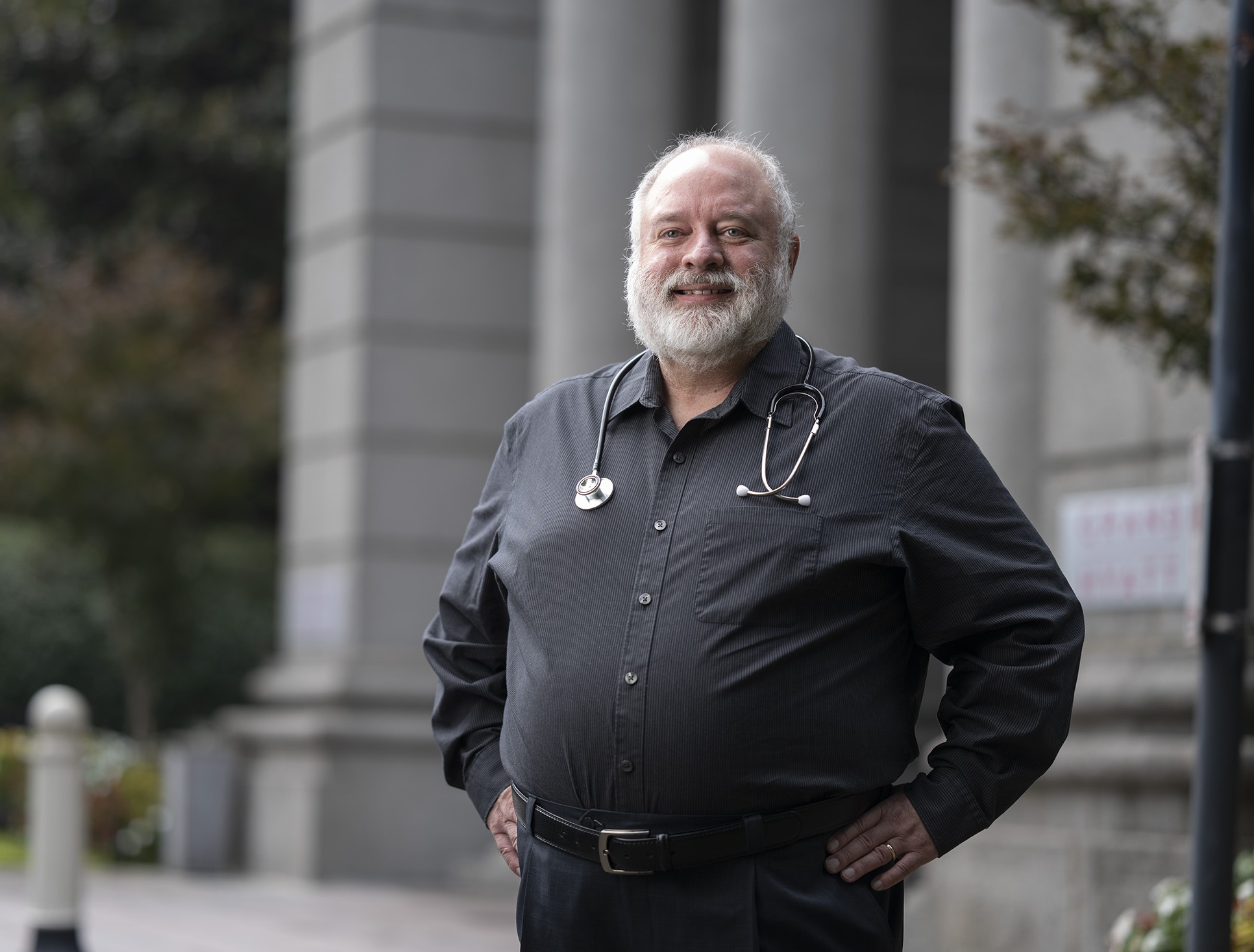In the January 2021 Medical Economics issue, Mark McClellan, MD, Ph.D., former CMS Administrator, and FDA Commissioner, now Director of the Duke-Margolis Center for Health Policy at Duke University, spoke with Chris Mazzolini about what a post-pandemic health care delivery system should look like and the role primary care physicians should hold in this system. Mr. McClellan recognized agilon health as the organization leading the value-based health care transformation and supporting like-minded primary care physicians in the endeavor. Read the full article below or here.
Medical Economics Journal, Medical Economics January 2021, Volume 98, Issue 01
January 12, 2021
Chris Mazzolini
Creating a post-COVID health care system
What should a post-pandemic health care delivery system look like? And what role should primary care physicians hold in this system?
The COVID-19 pandemic is a monumental challenge for the U.S. health care system. But it’s also a once-in-a-lifetime opportunity to shake up the status quo, which relies on a-fee for-service system that is outdated and leaves both physicians and patients wanting more.
What should a post-pandemic health care delivery system look like? And what role should primary care physicians hold in this system?
Medical Economics® sat down recently via Zoom with Mark McClellan, M.D., Ph.D., to discuss that opportunity. McClellan is a former CMS administrator and FDA commissioner, and now serves as director of the Duke-Margolis Center for Health Policy at Duke University. This transcript was edited for length and clarity.
Medical Economics®: How would you assess the performance of the health care system during COVID-19?
Mark McClellan: I think it’s been mixed. First of all, health professionals in this country have done an incredible job working under often very difficult conditions and a pandemic where we never seem to be able to get to full containment. So it’s continuing to be a heavy burden on health care workers all over the country as we keep seeing recurrent cases and continued heavy burdens on our health care system throughout hospitals and detecting cases and managing patients with COVID-19.
I’ve also been impressed with the progress that we’ve made on therapeutics. I’m glad that Remdesivir seems to be moving beyond a shortage, limited access stage and becoming more broadly available. And we’ve clearly learned a lot about how to manage severe cases. Where it’s been tougher is in just how well prepared and robust our health care systems are. At the beginning of the pandemic, we just weren’t well prepared for this. We faced shortages in everything from diagnostic testing to PPE, and that had big consequences for our ability to contain the spread.
Now, people have commented a lot about the relative weakness of the U.S. public health system. I’ve seen a lot of examples of health care organizations moving upstream and doing more testing and at-risk communities helping integrate with public health. That may be the best path forward for our country for the future, since we just don’t have a well-developed public health system.
And then finally, in terms of the way our health care system has responded, I’ve been particularly impressed with organizations that have already moved away from fee-for-service payments. Some of the organizations that are more advanced in capitated type models, those organizations didn’t have their revenue floor fall out from under them when utilization fell in March and April. They were already engaged in a lot of telehealth and longitudinal data management to monitor their higher risk patients. They had a relatively easy time adapting to what was needed in the pandemic, which was a shift towards early intervention with patients, managing risks, redesigning care to put an emphasis on sites of service that were more community- and home-based.
I hope those features of our health care system, the interaction with public health, the building on population- based, value-based care models are something that we can develop further as we get through the rest of this pandemic and move beyond. It would make for a much more resilient health care system, one that’s much easier on health professionals the next time around.
ME: What should that post COVID-19 health care delivery system look like? And how do we take the next step with value-based care?
McClellan: In Duke Margolis, we’ve been collaborating with a lot of organizations and experts around the country, including six former CMS administrators who have worked from different perspectives, Republican and Democrat, on value-based care and payment reforms, including organizations like Families USA that are very concerned about the well-being of lower- and middle-income families that have really struggled during the pandemic.
And it all comes back to changing the way that we support our health professionals so they have an easier job not only responding to the pandemic but delivering care that reflects the opportunities for keeping people out of the hospital, for early diagnosis, and for dealing with the root causes of health problems much better than we have in the past. You know, people have been talking about value-based care for a while and it I think the evidence confirms that it does support paying differently by designing care differently.
Working as teams, using longitudinal data systems, we can do a better job of keeping people out of the hospital, improving patient experience, avoiding complications, and even get some savings at the same time. It’s been slow going, but I’m hoping that this will be a time for some further progress. I think it’s something that health care providers are maybe a bit more open to after seeing their fee-for-service revenues go down.
From a patient standpoint, people really have appreciated not just the ability to set up a telehealth visit, but all these services being reorganized around them and meeting their needs. Things like phone calls to let them know their risk. Or if they do have symptoms or a problem, connecting 24/7 to a nurse practitioner who knows their care and their and their records. It’s just a better way of delivering care. Here in North Carolina, Blue Cross of North Carolina has implemented a program where they’re giving some of their primary care groups some additional payments to help them get through the pandemic, who haven’t had as much assistance as some of the hospitals from the CARES Act and other emergency funding.
So they’re getting some financial help right now. And in conjunction with that they’re planning to move into so-called advanced medical home models over the next couple of years. This was a strategic direction that Blue Cross wanted to move in anyway, to get to better care. But it’s a special opportunity to do it now with some of the savings from reduced utilization that we’ve seen over the last few months, channeled directly into strengthening the practices and helping them move into these better models.
And we’re seeing some other examples like that around the country. CMS is starting some new programs that permit some upfront payments to physicians as part of their direct contracting and primary care first models and retooled oncology care model and kidney care model. Many other private insurers are interested in the same kinds of approaches. So it does seem like an opportune time to reflect on what went wrong, and really try to advance some of these value-based care models.
ME: I’m wondering what you think the correct approach is to getting providers to embrace value-based care? There’s the carrot and there’s the stick, and we sort of applied both of them in different ways. I’m wondering what you think is the way to really get physicians and health systems to leap with both feet into value-based care?
McClellan: Yeah, there are carrots and sticks. And from my time at CMS, a lot of providers complained about too much paperwork. So obviously, the more this is carrot-incentive oriented, the better. I actually think that the challenge with MIPS is that it puts a lot of emphasis on some minor adjustments in fee-for-service. You still get paid on a fee-for-service basis. You still have to do all the billing, all the paperwork, and on top of that, you’ve got to make sure you’re reporting on all the measures and things like that. And some of the things that the metrics are intended to do, like avoid readmissions, or improve other aspects of quality, the fee-for- service system doesn’t really pay you that well to support.
So the kinds of reforms I think are more promising, and the ones that in recent CMS reports they’ve shown have led to more savings and bigger measurable improvements in care, are ones that do move a bit more away from fee-for-service. So for a primary care group, giving them a payment per person, as a medical home or direct contract payment, that they get up front, and that they can use to make new kinds of investments, restructuring their practice, moving towards more of a team-based approach to care, investing in new IT capabilities that they can use in collaboration with health plans and other community organizations to augment the scope of services they can provide to keep people healthy.
And it’s those shifts away from the fee-for-service hamster wheel that give providers a chance to take a step back and say, okay, how do I really want to design my practice, that I think can make the most difference. And we’re seeing those kinds of models, not just in primary care, but in oncology, and kidney care. Getting kidney patients out of the dialysis clinics, which are generally not associated with the best outcomes and instead using models that enable more dialysis at home. That just wasn’t possible under the old here’s-your-payment-for-each-dialysis-service approach. And same thing true for other areas of specialized care and for accountable care organizations, as well.
CMS has tried to take a step in a number of their major Alternative Payment Model programs recently, pushing a bit more towards bigger shifts away from fee-for-service. I get nervous when I hear terms like downside risk, but really the flip side of that is money that you get up front that you can spend on what you think is most important, not just money where you have to ask, “do I have to do this procedure, this visit, and document this MIPS measure in order to get it?”
So it’s those bigger shifts that I think are more promising. And the good news here too, is that there are more supports and more experience available for all types of providers, small and large, primary care and specialty, to understand better how they can succeed in these approaches. It’s something that we work on a lot at Duke Margolis. There are other large collaborations producing more examples of successes. Other programs that really can help providers that are interested in these models look at and understand what they need to do. It is some work but in terms of provider experience—the quality part of the quadruple aim that’s very important for practice sustainability, as well as patient experience and quality of care and outcomes — these really are, it is increasingly clear, better ways of delivering care.
ME: Primary care physicians often feel very undervalued. And they feel like they’re on the hamster wheel, maybe more than a lot of other specialties. What do you see as the ideal role for primary care in the health care system?
McClellan: They need to have a bigger role. That means more support for more enhanced kinds of primary care programs, the kinds of things I’ve just been talking about. They involve primary care physicians not just doing a couple of office visits a year, but really being the coordinators, or the integrators of better care models that include working with a team, a nurse who can help with ongoing chronic care management, a social worker who can help with root causes of patients not taking their medication, or having some kind of issue that keeps them from getting into the office when a checkup is needed. Working with someone in the community who can help them as well as be sort of a trusted voice.
What we’re really talking about is an enhanced primary care model that costs more money. And that’s why I think some of the major payers for value-based care models are trying to get there by really creating significant payments to the enhanced primary care groups that are more than what they would have gotten before. But it’s also not linked to fee-for-service, because all those things I just mentioned are not things that are paid for in fee for service but instead are related to additional capabilities for helping to manage patients more effectively, getting better results, keeping them at home more. And they typically come with some accountability around health outcomes for their population or experience for their population. And getting total cost of care down.
We saw a number of models tried in the 2000s and 2010s, that were kind of additional payments for primary care. And those were helpful, and they made a difference in terms of supporting these kinds of additional capabilities, strengthening the primary care offices. Unfortunately, especially if you count the additional payments to primary care, they didn’t generally show overall health care savings, at least in the first few years after they were implemented.
The models that have shown more of an effect are these kinds of direct contracting or advanced primary care models that are more like physician led ACOs where the physician groups do take on at least some limited accountability for the total cost of care for their patients. It gives them more opportunities for additional revenues when they keep patients out of the hospital, get them into more effective care models, use specialty care more efficiently. Bring costs down as well as improving outcomes.
There are more programs available that physicians can get engaged in, like Aledade Health or Agilon, to provide support for some of these additional capabilities. Or they can work with health plans and Medicare Advantage and the Blue Cross plan that I mentioned earlier. So those kinds of opportunities look very promising as a realistic path available increasingly now to primary care docs to take primary care reimbursement from the really low5% or thereabouts of spending in the US, up to 10% or more. If you count all the integrated services, the coordination with behavioral health, and so forth, it makes for what should be a much stronger, enhanced primary care for the future.
Contact for media enquiries
[email protected]Up Next.
Blog Feb 03, 2021 | Article
Innovo Research Expands Nationwide Reach Thanks To A New Partnership With agilon health And Its Extensive Physician Network
WILMINGTON, N.C., Feb. 3, 2021 /PRNewswire/ — Innovo Research, a nationwide clinical res...




